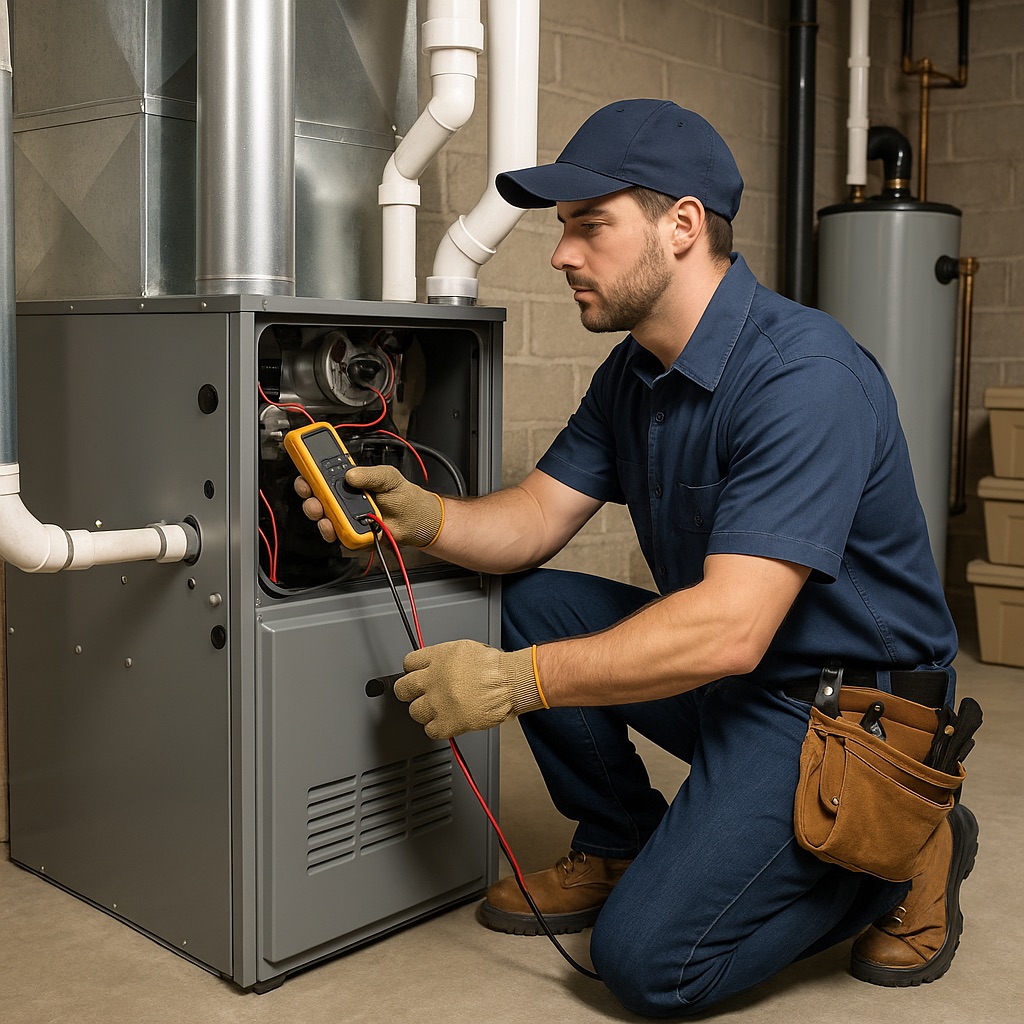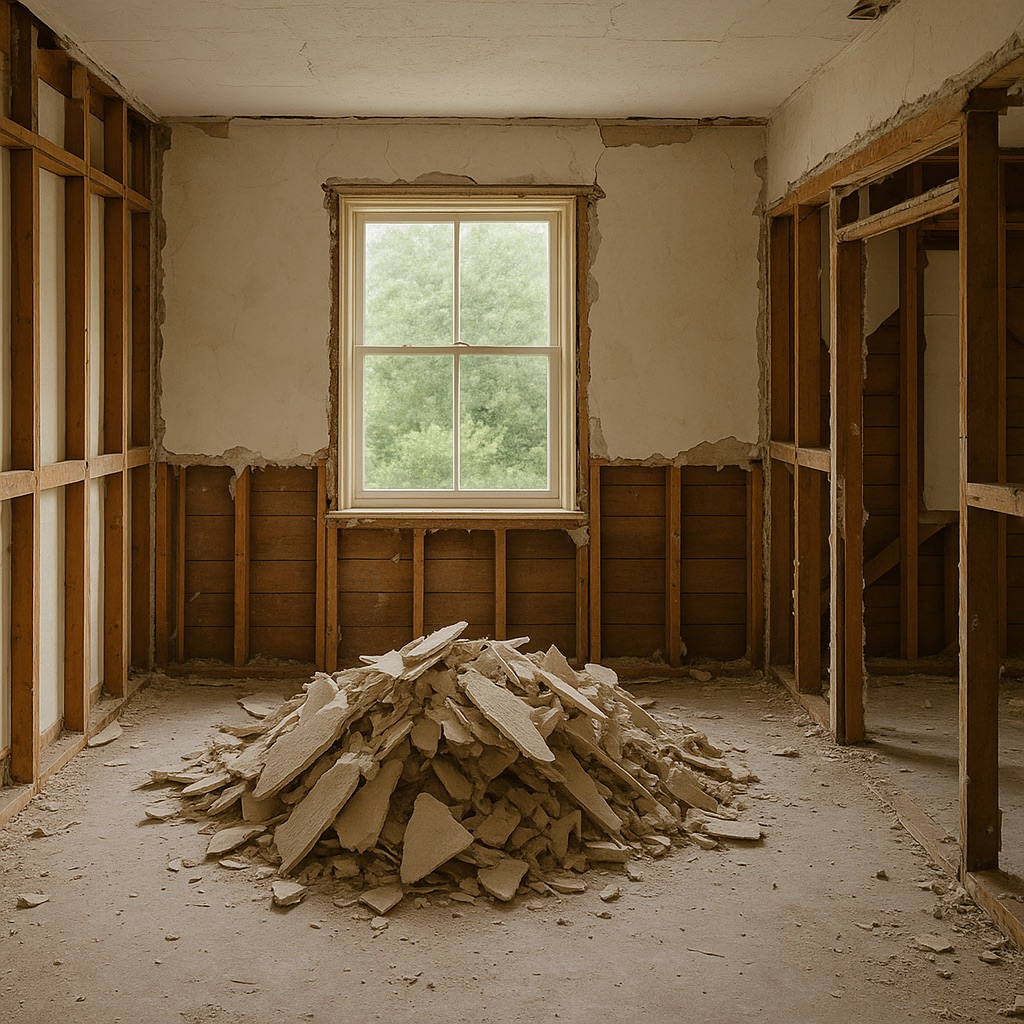Last updated on
Your home is more than just four walls and a roof—it’s a living, breathing system made up of many interconnected parts. Just like your body, your home needs regular attention and care to keep functioning well. And just like skipping a doctor’s visit can lead to trouble, neglecting your home’s systems can cause serious and expensive issues down the road.
This is especially true in places like Chambersburg, PA, where the climate demands a lot from your house. Summers can bring a heavy dose of humidity, and winters? They’re often downright brutal. In both cases, your home has to work overtime to keep you comfortable and safe.
That’s where this checklist comes in. Think of it as a routine wellness plan for your home. In this article, we’ll discuss the seven key systems you should be checking in on regularly.
Table of Contents
Heating and Cooling: The Power Behind Year-Round Comfort

In a town like Chambersburg, PA, where the seasons demand so much from your home, your HVAC system plays a critical role. The sweltering humidity of summer and the bone-chilling cold of winter require a heating and cooling system that operates efficiently and consistently. Your comfort, energy bills, and even your indoor air quality depend on how well this system is maintained.
Routine maintenance is the key. Air filters should be changed every one to three months, depending on usage and whether there are pets in the home. Dust and debris accumulate quickly and can force your HVAC system to work harder than necessary. Over time, that strain can reduce its lifespan. Ductwork should also be inspected every few years to ensure there are no leaks or blockages.
Partner with a professional HVAC contractor in Chambersburg, PA, for a tune-up in the spring and again in the fall. This helps keep the system in peak condition. These checkups often include refrigerant level checks, thermostat calibration, electrical inspection, and a review of critical components. Investing in regular service doesn’t just improve efficiency but also helps you catch small issues before they turn into expensive repairs.
Plumbing: Small Leaks, Big Problems
Your plumbing system operates behind the scenes, quietly supporting everything from your morning shower to your dishwasher’s rinse cycle. But just because you don’t see it doesn’t mean you can ignore it. Plumbing issues tend to start small—an occasional drip, a slow drain, a slight discoloration in the water—but they can escalate quickly.
Inspect your plumbing regularly. Look under sinks for signs of leaks or water stains. Check exposed pipes in the basement or utility areas for signs of corrosion. If you detect any musty smells, that could point to hidden moisture that may lead to mold growth. Also, pay attention to water pressure. A sudden drop can signal a leak somewhere in the system.
Roof and Gutters: Your First Line of Defense
Your roof protects your home from the elements, but it can only do that if it’s in good condition. Shingles can crack, curl, or go missing after heavy wind or storm activity. Even minor damage can allow water to seep in, leading to mold, rot, and structural damage. It’s important to do a visual inspection twice a year and after major weather events.
Gutters are often overlooked, but they’re essential for directing water away from your home. When clogged, water can overflow and damage siding, seep into your foundation, or flood your basement. Cleaning gutters in the spring and fall is a simple task with big benefits. Downspouts should also direct water at least five feet away from the house to prevent saturation around the foundation.
Electrical System: Safety First, Always
Your home’s electrical system powers nearly everything in your daily life. From lighting and appliances to charging your phone, it needs to be reliable—and above all, safe. Issues like flickering lights, frequently tripped breakers, or outlets that feel warm to the touch should never be ignored.
If your home is older, it might not be up to modern electrical standards. That’s why it’s smart to have a licensed electrician perform a full inspection every few years. Not only does this help catch problems early, but it ensures your wiring and panels are safe and capable of supporting today’s technology needs.
Insulation and Sealing: Keep the Elements Outside
A well-insulated home keeps the indoor temperature stable, which means less strain on your HVAC system and lower energy bills. Over time, insulation can settle or become damaged, reducing its effectiveness. The attic is a common trouble spot, and upgrading insulation there can make a noticeable difference.
Air leaks around windows and doors are also common culprits of energy loss. On a breezy day, you can often feel these drafts. Weatherstripping and caulking are simple fixes that make a big impact. Even small gaps can lead to major heat loss in the winter or cooling inefficiency in the summer.
Appliances: The Workhorses of the House
Home appliances handle many of the everyday tasks that keep life running smoothly. From keeping food fresh to washing clothes, they’re often used but rarely thought about—until something goes wrong. That’s why it’s important to perform regular upkeep to extend their life and maintain efficiency.
Your refrigerator, for example, works non-stop. Dust and dirt can collect on its coils, causing it to overheat and use more energy. Cleaning the coils every six months helps prevent breakdowns. For dishwashers, it’s a good idea to clean the filter and run a cleaning cycle monthly to remove buildup. Washing machines should be checked for worn hoses and cleaned to prevent mildew, especially in front-load models.
These simple habits reduce wear, and help appliances run better for longer.
Basement and Foundation: Stay Dry, Stay Safe
Your basement and foundation are critical to your home’s structural health. Moisture is the biggest threat here. Whether it seeps through tiny cracks or builds up from poor drainage outside, water can cause mold growth, wood rot, and foundation damage.
Inspect the walls and floors for cracks or signs of water entry. Do you notice chalky white streaks? That’s efflorescence—a sign that water is making its way through the concrete.
Make sure your sump pump is working and test it before each rainy season. Downspouts should direct water several feet away from the foundation. If your yard slopes toward the house, regrading may be necessary. Preventing moisture at its source is the most effective way to protect your basement and avoid costly foundation repairs.
Taking care of your home is all about being proactive rather than reactive—spotting issues early, handling maintenance on time and protecting your investment.
Keeping your home in top condition means more than just preventing problems. It means greater comfort, better energy efficiency, and peace of mind knowing your home can handle whatever the seasons bring. By staying on top of this checklist, you give your home the care it needs to support you year after year.




